Converting an automatic BMW E46 to a manual transmission enhances driving experience, offering better control and performance․ This swap requires careful planning, specific parts like the Getrag or ZF gearbox, and mechanical expertise․ Popular among enthusiasts, it involves replacing key components such as the pedal box, clutch, and wiring․ With proper tools and guidance, the swap transforms the car’s dynamics, making it more engaging for drivers․ Active forums and detailed DIY guides provide invaluable support for those tackling this project․
Overview of the E46 Manual Transmission Swap
The E46 manual transmission swap involves replacing the automatic gearbox with a manual unit, typically a Getrag or ZF transmission; This complex process requires compatibility checks, specialized tools, and mechanical expertise․ Key components include the manual gearbox, clutch kit, pedal box, driveshaft, and wiring harness․ Ensure all parts are compatible with your specific E46 model for a smooth conversion; This swap is a significant mechanical project but offers improved performance and driver engagement․ Proper planning and research are essential to avoid complications and ensure success․
Benefits of Converting to Manual Transmission
Converting to a manual transmission in your E46 offers enhanced driving engagement and control․ It improves fuel efficiency, reduces maintenance costs, and increases performance․ Drivers enjoy better acceleration and a more direct connection to the vehicle․ Additionally, manual transmissions are generally more durable than automatics, reducing long-term repair expenses․ The swap can also boost the car’s resale value and appeal to enthusiasts․ Overall, the conversion provides a more rewarding driving experience and practical advantages, making it a worthwhile investment for E46 owners seeking to optimize their vehicle’s potential․
Key Considerations Before Starting the Swap
Before starting an E46 manual transmission swap, ensure compatibility of parts like the Getrag or ZF gearbox with your specific model․ Verify the pedal box, clutch, and wiring harness are suitable for manual operation․ Compatibility issues, especially with the ECU and wiring, can arise, so proper research is crucial․ Additionally, assess your mechanical skills and tools, as the process is complex․ Plan for potential challenges like driveshaft adjustments and transmission bracing․ Consulting forums or guides can help address common pitfalls and ensure a smooth conversion․
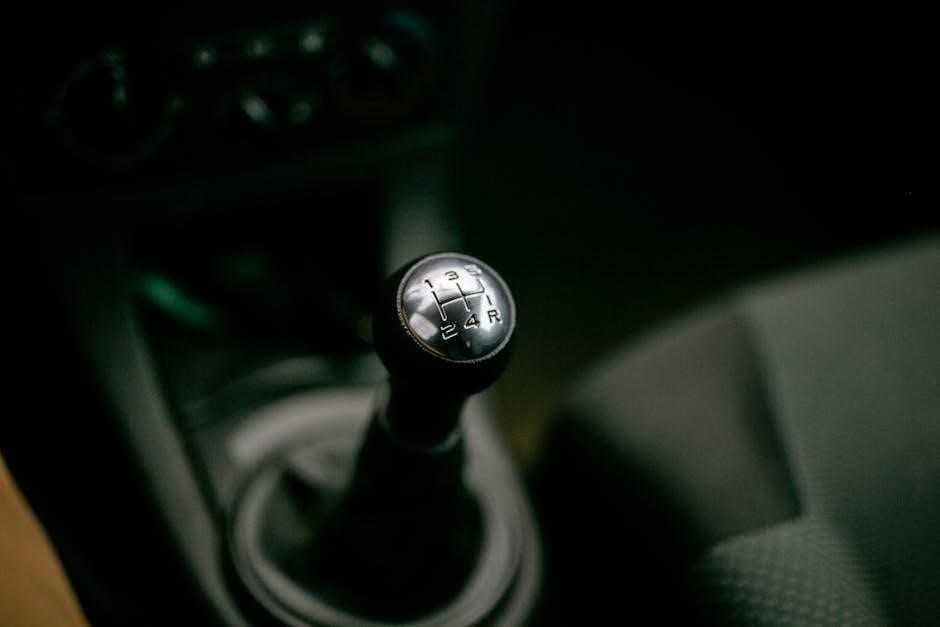
Essential Parts for the Manual Conversion
The swap requires a manual transmission (Getrag or ZF), clutch kit, flywheel, pedal box, master cylinder, driveshaft, transmission brace, and compatible wiring harness․
Manual Transmission (Getrag or ZF)
The manual transmission is the core of the swap․ The Getrag 420G or ZF S5-31 are common choices for the E46, offering durable and smooth shifting․ Ensure the transmission is compatible with your engine and drivetrain configuration․ The Getrag is often preferred for high-performance setups, while the ZF may suit heavier models․ Always source a transmission designed for the E46 to avoid compatibility issues․ Proper installation and alignment are critical for optimal performance․
Clutch Kit and Flywheel
A high-quality clutch kit is essential for smooth power delivery․ Choose between organic or ceramic clutch discs, depending on your driving style․ The flywheel must be compatible with the manual transmission and should be resurfaced or replaced to ensure proper engagement․ A lightweight flywheel can improve throttle response, while a dual-mass flywheel may better suit heavy or high-torque applications․ Always pair the clutch kit with the correct pilot bearing for seamless installation and operation․ Proper alignment and adjustment are critical for avoiding premature wear and ensuring optimal performance․
Manual Pedal Box and Master Cylinder
The manual pedal box and master cylinder are vital for clutch operation․ The pedal box must be compatible with the E46 chassis and transmission․ A high-quality master cylinder ensures proper hydraulic pressure to the clutch slave cylinder․ Compatibility between the master and slave cylinders is crucial for consistent pedal feel․ Installation requires precise alignment and bleeding of the hydraulic system to eliminate air bubbles․ Proper setup ensures smooth clutch engagement and disengagement, enhancing overall driving experience and performance․
Driveshaft and Transmission Brace
A compatible driveshaft is essential for the manual transmission swap, as it must match the new transmission’s specifications․ The driveshaft length and spline count must align with the E46 chassis and manual gearbox․ A transmission brace is recommended to stabilize the unit, reducing flex and potential damage․ Adjustable braces offer precise alignment, ensuring smooth power delivery․ Proper installation of these components is critical for reliability and performance, avoiding vibration and noise issues during operation․ They play a key role in maintaining the integrity of the drivetrain․
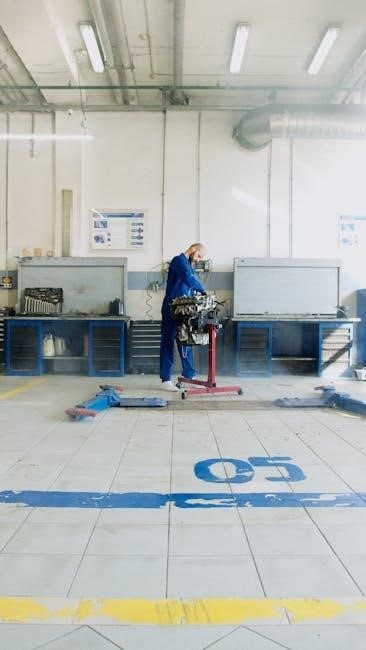
Wiring Harness and Electronics
The wiring harness must be modified to accommodate the manual transmission, as the automatic and manual systems differ․ The ECU may need reprogramming to recognize the manual setup․ A custom wiring harness or retrofit solution ensures proper communication between the transmission and engine․ The reverse light switch and clutch pedal sensor must be integrated into the wiring․ Incorrect wiring can lead to issues like poor shifting or inability to start the car․ Professional consultation is recommended to avoid electrical complications during the swap․
Tools and Mechanical Skills Required
A transmission jack, wrenches, and socket set are essential․ Mechanical aptitude, experience with transmission installation, and troubleshooting skills are highly recommended for a successful swap․
Specialized Tools for the Swap
The E46 manual transmission swap requires specific tools, such as a transmission jack for safe handling, a BMW-specific DISA tool for valve work, and a clutch alignment tool for proper clutch installation․ A metric hex socket set is essential for hex bolts, while a flywheel puller and pilot bearing puller are needed for crankshaft and bearing removal․ An adjustable clutch cable tool ensures accurate cable adjustment․ While general tools like wrenches, sockets, and screwdrivers are necessary, specialized tools are critical for precision and safety during the swap․
Recommended Workshops or Garage Setup
A well-equipped garage or workshop is crucial for a successful E46 manual transmission swap․ Ensure the space is clean, well-ventilated, and has adequate lighting․ A hydraulic lift or sturdy jack stands are essential for lifting the car safely․ A workbench with vise and tool storage helps organize parts and tools․ Proper lighting, such as LED garage lights, improves visibility․ A parts cleaning station and drain pan are recommended for handling fluids․ While professional-grade equipment is ideal, a well-prepared home garage can suffice with basic tools and organization․
Basic Mechanical Skills Needed
Performing an E46 manual transmission swap requires fundamental mechanical skills, including proficiency with tools like wrenches, sockets, and screwdrivers․ Familiarity with mechanical systems, such as transmission and clutch operation, is essential․ The ability to follow detailed instructions and troubleshoot common issues is crucial․ Basic understanding of safety procedures, like proper jacking and lifting techniques, is necessary to protect both the car and the person working on it․ Patience and attention to detail are vital to avoid costly mistakes during the process․

Step-by-Step Guide to the Swap

This guide provides a detailed, step-by-step approach to replacing the E46’s automatic transmission with a manual one, covering preparation, removal, installation, and post-installation checks․
Pre-Swap Preparation and Planning
Before starting the E46 manual transmission swap, thorough preparation is essential․ Research the process, gather all necessary tools, and ensure compatibility of parts․ Inspect the vehicle’s current condition, addressing any issues that could complicate the swap․ Collect specialized tools, such as a BMW-specific transmission jack and clutch alignment tools; Plan the workspace, ensuring adequate lighting and access․ Review wiring diagrams and mechanical systems to understand the scope․ Create a detailed timeline and budget, accounting for potential delays․ Backup plans, such as renting a lift or seeking assistance, are crucial for smooth execution․
Automatic Transmission Removal Process
Removing the automatic transmission involves several meticulous steps․ Begin by draining the transmission fluid and disconnecting the electrical connectors․ Remove the transmission mounts and crossmember, then disconnect the driveshaft and torque converter․ Use a transmission jack to support the unit securely․ Carefully maneuver the transmission out of the chassis, ensuring no damage to surrounding components․ Proper tools, such as a transmission jack and wrenches, are essential for safe removal․ Wear protective gear to prevent injury from fluid spills or heavy components․ A helper can assist with stabilizing the transmission during extraction․
Manual Transmission Installation Steps
Begin by lifting the vehicle and removing any remaining components from the automatic transmission setup․ Install the manual transmission, ensuring it is securely bolted to the engine․ Attach the driveshaft and transmission brace, aligning everything properly․ Connect the clutch master cylinder and slave cylinder, bleeding the system to remove air bubbles․ Reinstall the manual pedal box and linkages, ensuring smooth operation․ Verify all electrical connections and fluid levels․ Test the clutch and gear engagement before lowering the car․ Double-check all bolts and connections for tightness and proper alignment․
Post-Installation Checks and Adjustments
After installing the manual transmission, perform a thorough inspection of all connections and components․ Bleed the clutch system to ensure proper engagement and eliminate air bubbles․ Test the gearshift and clutch operation, checking for smooth transitions and lack of grinding․ Inspect the driveshaft and transmission brace for proper alignment and tighten all bolts․ Verify fluid levels and electrical connections․ Conduct a test drive to assess performance, ensuring all gears engage smoothly and the clutch operates correctly․ Address any issues promptly to avoid further complications․
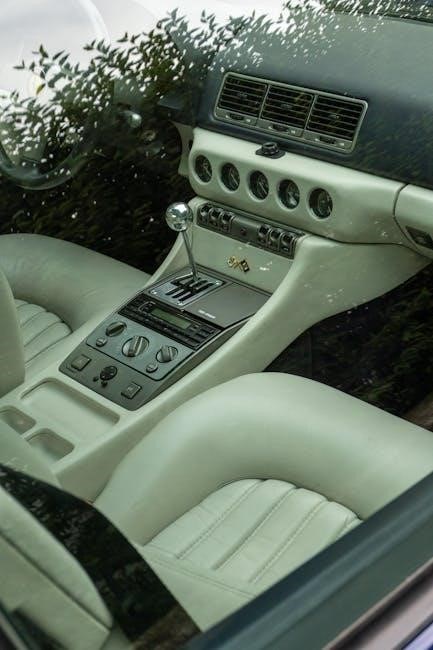
Common Issues and Solutions
Common issues during E46 manual swaps include mechanical adjustments, alignment problems, and system calibration․ Solutions involve precise adjustments, realignment, and recalibration to ensure smooth operation․
Troubleshooting Common Problems
During an E46 manual swap, common issues include difficulty shifting gears, transmission noise, or leaks․ Troubleshooting involves inspecting the clutch alignment, checking for proper bearing installation, and verifying fluid levels․ If gears grind, ensure the clutch pedal setup is correct and the transmission is properly aligned․ Electrical issues, like reverse light malfunctions, may require wiring adjustments․ Addressing these problems early prevents major setbacks and ensures a smooth swap․ Always refer to repair manuals or forums for specific solutions tailored to your setup․
- Check clutch alignment and master cylinder function for smooth shifting․
- Inspect bearings and lubrication for noise reduction․
- Verify wiring harness connections for electrical components․
- Adjust pedal setup to eliminate gear grinding․
Addressing Compatibility Issues
Compatibility issues arise when components like the transmission, driveshaft, or wiring don’t align with the E46 chassis․ Ensure the manual transmission (Getrag or ZF) matches the engine type and chassis mounts․ Driveshaft length and spline count must be correct to avoid vibration or fitting problems․ Electrical compatibility, such as ECU recognition of the manual transmission, is crucial․ Verify wiring harness adaptability and sensor integration․ Check clutch pedal assembly compatibility with the firewall and master cylinder setup․ Resolve these mismatches to ensure seamless integration and proper function․
- Confirm transmission type (Getrag/ZF) matches engine and chassis․
- Verify driveshaft compatibility for length and spline count․
- Ensure electrical system recognizes manual transmission signals․
- Check clutch pedal assembly fitment and wiring․
Dealing with Wiring and Electrical Challenges
Wiring and electrical issues often arise during an E46 manual transmission swap․ The automatic transmission relies on specific electronics, including sensors and solenoids, which must be reconfigured for manual operation․ Ensure the ECU recognizes the manual transmission by reflashing or reprogramming․ The reverse light switch, connected to the manual transmission, must be wired correctly․ Additionally, the clutch pedal sensor and gear position indicator need proper integration․ Consult wiring diagrams or forums for accurate connections to avoid errors․
- Reflash or reprogram the ECU for manual transmission recognition;
- Install and wire the reverse light switch properly․
- Integrate the clutch pedal sensor and gear position indicator․
- Use detailed wiring diagrams to avoid electrical mismatches․

Budget and Time Considerations
The E46 manual swap requires a budget of $2,500-$4,000, covering parts and labor․ DIY setups can save costs but demand time and expertise․ Plan for 40-60 hours of work, depending on experience and garage setup․
Estimated Cost of the Swap
The estimated cost for an E46 manual transmission swap ranges from $2,500 to $4,000, depending on the condition and source of parts․ A used manual transmission can cost $1,000-$1,500, while a rebuilt unit may exceed $2,000․ Additional expenses include a clutch kit ($300-$500), flywheel ($200-$400), and pedal box ($500-$700); Labor costs, if hiring a professional, can add $1,000-$1,500․ DIY enthusiasts may save on labor but should budget for tools and potential mishaps․ Prices vary based on part quality and availability, so shopping around is recommended․
Time Required for the Conversion
The E46 manual transmission swap typically requires 20 to 40 hours of labor, depending on mechanical aptitude and experience․ DIY enthusiasts with basic tools may take 40-60 hours, while experienced mechanics can complete it in 20-30 hours․ Factors like prior disassembly, tool availability, and unexpected issues can extend the timeframe․ Proper planning and preparation are key to minimizing delays․ Budgeting extra time for troubleshooting is wise, especially for those new to such projects․ A well-equipped workshop and knowledgeable assistance can significantly speed up the process․
Community Resources and Support
The E46 community offers extensive support through forums, social media groups, and local clubs․ These resources provide valuable advice, troubleshooting tips, and shared experiences for a successful swap․
Online Forums and Communities
Online forums like Reddit’s r/BMW and r/E46, along with specialized platforms like Bimmer Forums and E46 Fanatics, offer invaluable resources for E46 manual swaps․ These communities provide detailed DIY guides, troubleshooting tips, and real-world experiences․ Members share insights on parts compatibility, installation challenges, and common pitfalls․ Active participation allows enthusiasts to ask questions, gain advice, and learn from others who have completed the swap․ These forums are essential for staying updated on best practices and overcoming obstacles during the conversion process․
Recommended DIY Guides and Videos
YouTube channels like EricTheCarGuy and ChrisFix offer detailed videos on E46 manual swaps, covering step-by-step processes․ Websites such as Bimmer Forums and E46 Fanatics host extensive DIY guides with photos and instructions․ These resources often include tips for troubleshooting and parts compatibility․ Written guides from reputable sources like Turner Motorsport provide in-depth technical details․ Many of these resources also cover pre-installation planning and post-installation checks, ensuring a smooth transition to manual transmission․ They are invaluable for DIY enthusiasts aiming for a successful swap․
Professional Assistance Options
For those who prefer expert hands, professional mechanics specializing in BMWs, particularly the E46, are highly recommended․ Transmission specialists can handle intricate aspects of the swap with precision․ Reputable shops catering to BMW enthusiasts often provide comprehensive services, including post-swap tuning and adjustments․ Additionally, dyno tuning services ensure optimal performance after the conversion․ Professionals handle complex wiring and computer recalibrations seamlessly, offering peace of mind and a flawless outcome․ Their expertise guarantees a smooth transition and reliability after installation․

Final Testing and Inspection
After installation, perform a thorough test drive to ensure smooth shifting and proper transmission engagement․ Check for any leaks or unusual noises․ Verify all components function as intended for optimal performance and safety․
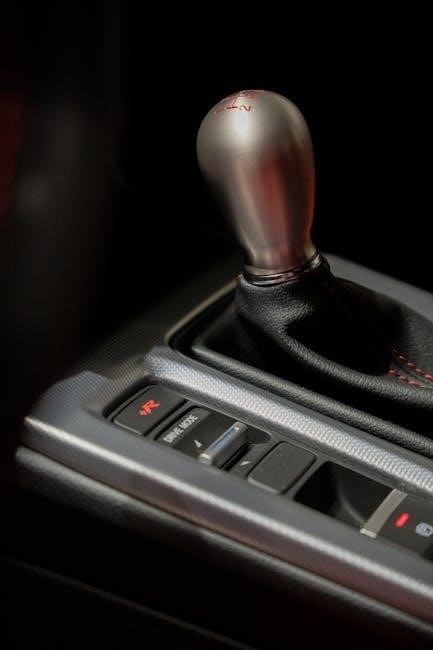
Test Driving and Performance Check
A thorough test drive is essential to evaluate the manual transmission swap’s success․ Ensure smooth shifting, proper clutch engagement, and consistent acceleration․ Check for any unusual noises or vibrations during acceleration and deceleration․ Test in various driving conditions to assess performance and reliability․ Verify that all gears engage correctly and that the clutch pedal operates smoothly․ A safe, controlled environment is crucial for this phase․ Pay attention to any hesitation or slipping, which may indicate issues with the clutch or transmission synchronization․ A successful test drive confirms the swap’s effectiveness and ensures a satisfying driving experience․
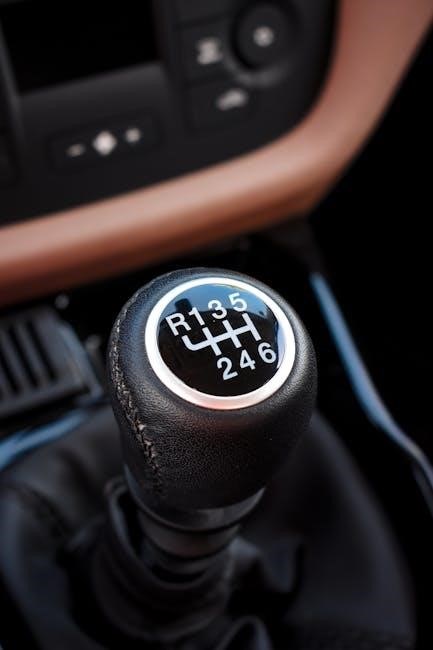
Inspection of All Installed Components
After the manual transmission swap, inspect all installed components to ensure proper installation and functionality․ Check the transmission mounts, driveshaft, and clutch system for secure connections and alignment․ Verify the wiring harness and electrical connections are intact and functioning correctly․ Inspect the pedal box and master cylinder for leaks or misalignment․ Ensure the flywheel and clutch are properly seated and aligned; Examine all bolts and fasteners for correct torque specifications․ A thorough inspection helps identify potential issues before they escalate, ensuring reliability and performance․
